Set on the Caribbean Sea with a fascinating colonial history there’s no shortage of things to do in Cartagena, Colombia. A popular backpacker destination, in addition to the city’s historic fortifications, charming, colorful colonial architecture, and vibrant culture it also is a great gateway to visit some of the adventurous and ecofriendly spots along Colombia’s Caribbean Coast. Read on to learn more about visiting and what to do in Cartagena, Colombia.
***Disclaimer: Affiliate links are used on this site. If you see a link assume I probably get a kickback from it. It won’t cost you any extra, in fact at times it will get you a discount. I hugely appreciate you using my links.***
What To Do in Cartagena, Colombia
Historic Walled City | Getsemaní | Beaches | Castillo San Felipe | Local Food | Nightlife | Where To Stay | How Long to Stay | Getting Around | Safety
Walk the Historic Walled City
Cartagena is probably best known for its colonial walled city, which is a UNESCO world heritage site. It is one of the few places left in the world with most of its colonial era city walls still in tact. This area, also known as Centro, is the heart of Cartagena. Therefore strolling through Centro has to be at the top of any list of what to do in Cartagena.
You’ll enjoy simply walking around and taking in the colonial architecture. In particular be on the lookout for the big, wooden doors and their elaborate knockers as well as the big, flower and ivy covered balconies.
Other sites of interest in Centro include the San Pedro Church, the Santodomingo Church, and the city’s Cathedral. Those interested in learning more about the history of the city should visit the terrific Naval Museum (Museo Naval del Caribe), which has great models and accounts of the numerous attacks on Cartagena like those led by Francis Drake and Edward Vernon as well as exhibits on the city’s key role in Colombia’s independence.
You can also visit the Palacio de la Inquisición, where in addition to more exhibits on the city’s history, you can see some Inquisition era torture devices. Finally, the always free to enter Gold Museum has some neat examples of the expert gold work of Colombia’s indigenous peoples.
The most famous landmark of the city is the The Torre del Reloj, or Clock Tower, which used to mark the entrance to the old city and is located between Plaza de Independencia and Plaza de los Coches.
If you don’t want to do it on your own there are plenty of walking tours of the walled city available.
And of course, you’ll want to walk the wall itself, taking in the views of the Caribbean on one side and the city on the other. The wall makes for a great place to watch sunset over the sea as well. A popular spot is the famous Café del Mar. Atop the wall itself, or for another great alternative view, check out the rooftop bar open to the public at Hotel Movich.
For a more backpacker budget friendly sunset watching experience, grab a street beer from a vendor and sit along the wall just outside of Café del Mar.
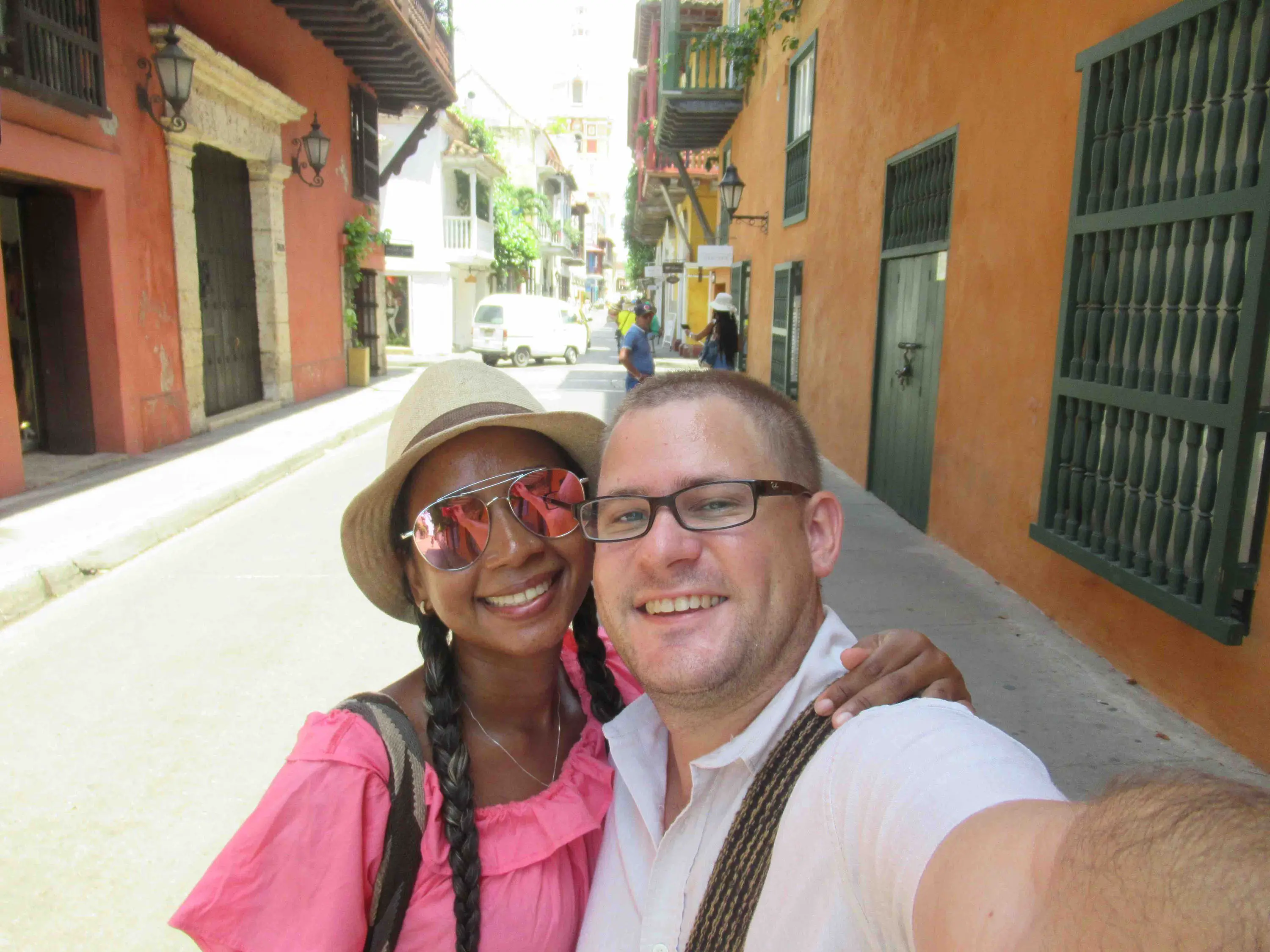
Hang out in Getsemaní
Just outside the walled city, the equally historic neighborhood of Getsemaní has become one of Colombia’s trendiest neighborhoods.
Recent years have seen a proliferation of bars, cafés, and hostels here. Some of my favorites include Da Silvio, Demente, Kokoa Sushi Wok, and Café De La Trinidad. For more budget friendly spots, check out Los Taquitos de Maria and the food stalls set up in night in the Plaza de la Trinidad.
Speaking of the Plaza de la Trinidad, it makes for a fun place to spend some time in the evening. Visitors and locals alike gather to enjoy dinner at the food stalls or surrounding restaurants and cheap beers from the corner store. So you’ll likely want to include a return here in the evening among your other things to do in Cartagena as well.
You’ll also want to get some pictures in Getsemaní on the Callejón Angosto with its colorful umbrellas and with the colorful flags on Calle San Andres. There seems to be another street every few months that has colorful decorations, so be on the lookout for other great photo ops!
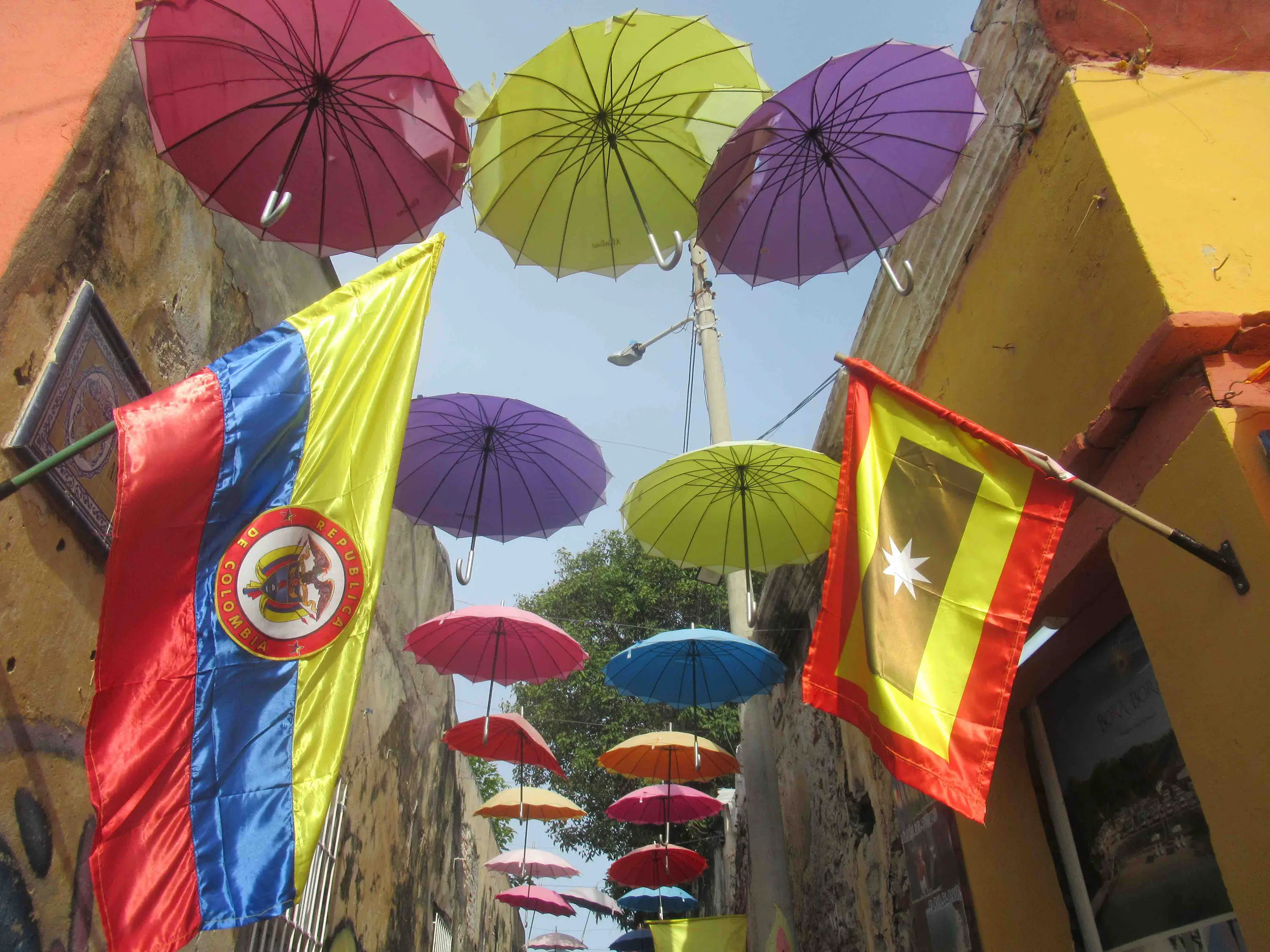
Enjoy the Nearby Beaches
In addition to spending a day walking around Centro and Getsemaní, the next top thing for what to do in Cartagena has to be a visit to the nearby beaches. The beaches in town themselves are decent. I would recommend the smaller crowds at the beach near the airport known as Playa Azul over the more crowded ones in Bocagrande.
However, I’d even more strongly recommend getting to the beaches outside the city, which are much prettier. Perhaps the most famous beach in the area is Playa Blanca, located about 90 minutes outside the city, so perfect for a day trip. A gorgeous stretch of beach, it can get overcrowded on weekends and peak tourist times, so try avoid it during those times if at all possible.
You can reach Playa Blanca by public bus then mototaxi, by private taxi, by boat, with a tour, or, my preferred method, a shuttle bus that leaves from Hostel Mamallena.
If you do go to Playa Blanca, consider spending the night in one of the little cabins. You’ll get to enjoy the evening with its gorgeous sunset and lesser crowds. Maybe even use the extra time to take a sunset cruise with open bar or visit a beach club.
Also, not far from Playa Blanca is the Colombian National Aviary, which is very well done. Some tours out to the beach do include a visit to the Aviary, or you could arrange for a mototaxi to take you there from the beach and vice versa pretty easily.
Finally, I can’t recommend enough a day trip to the Rosario Islands. Located about 90 minutes off the coast, this island chain is gorgeous and I would put them ahead of Playa Blanca on my list of what to do in Cartagena, even though it can be a tad pricier to set up.
The best way to enjoy it is with private booze cruise rental, at least if you can get together a group to make it cost effective. There are shared group party boats organized by Hi Cartagena if you are solo or a smaller group.
These will often include a snorkeling stop before heading to the party spot of Cholón, where basically everyone ties up around a shallow area where you can swim, and blasts their music and has dance parties on their boats.

If you can’t swing the private boat rental, I’d recommend a day pass at one of the hotels or spots in the islands. The larger group tours are not the best experience. Bendita Beach makes for a very good day pass option. Bora Bora Beach Club is also well known and has a good set up. Day passes in the islands should include boat transportation there and back, and they usually include lunch and may also offer open bar options.
You could opt for a closer out of town beach experience at Tierra Bomba across the bay from the city. Palmarito Beach, Blue Apple Beach House, Fenix Beach, and Bomba Beach all are good day pass options there (all of these also offer overnight accommodations).
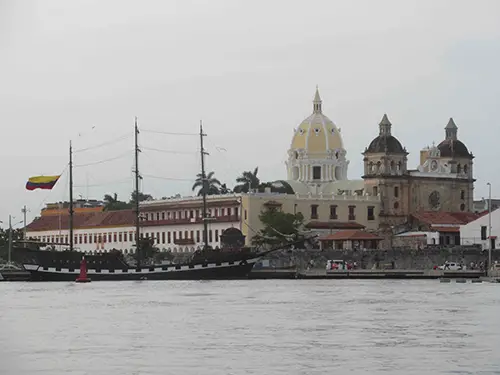
Visit the Castillo San Felipe
Another popular thing for what to do in Cartagena is paying a visit to the Castillo San Felipe. This fort is the largest built by the Spanish on mainland South America and shows just how important Cartagena was commercially to the Spanish Empire.
The site of the defeat of Vernon’s attack in 1741, the fort was later expanded to the massive structure you see today. It also has a unique shape as since it was built on a hill, and the stone work more or less encased the hill, it doesn’t have the symmetrical structure of other forts built at the time.
A visit to fort will let you get some neat views of the city and bay, learn more about the history, and let you explore some neat tunnels through the different sections.

Enjoy Some Great Food
On the Caribbean Sea, Cartagena has lots of must try seafood. Dishes to try include the seafood stewed in a coconut sauce known as cazuela de mariscos, shrimp or prawns in the garlic sauce known as al ajillo, ceviche, and the fried fish plate with coconut rice and patacones (fried mashed plantains). That last one is best enjoyed on the beach with a cold beer.
Also, you’ll want to be sure to try an arepa de huevo. More like an empanada than an arepa, these are corn arepas filled with a fried egg and ground beef. Often enjoyed for breakfast or as an evening snack, they are practically an institution in Cartagena and even have their own festival.
You can find them at street stalls scattered around town, but the best are at a little spot named Donde Magola near the Exitó Supermarket just inside the walled city. The street fryers right around the corner are also great.
As far as where to eat, for finer dining, consider Alma, Marea by Rausch, Club de Pesca, and La Cevicheria. For more moderately priced but great local fare, check out La Mulata or El Espiritú Santo in Centro.
For cheaper eats, you can find cheap lunch options known as corrientes or almuerzos ejectutivos at many restaurants in Centro. These usually include a meat, rice, beans or lentils, and soup. And of course there are plenty of street food options. In addition to the arepa de huevo, carimañolas, yucca fritters, are tasty. At night you can also get a patacon con todo layered with meat and cheese.
If you want to burn off some calories in between all the eating you can do a street food tour by bike.
For other non-traditional fare, check out Cuzco for great Peruvian, Demente for great brick oven style pizzas, Da Silvio for tasty pastas, Burger Bistro for, you guessed it, burgers, and Kokoa or Tabetai for sushi. For breakfast/brunch check out Café Epoca and La Brioche (Brioche also does an amazing burger).
Nightlife in Cartagena
Come on, you’re in Latin America, going out dancing is another thing that has to be on your list of what to do in Cartagena!
Unsurprisingly, salsa is a popular dance option, and the famous Club Havana where Hillary Clinton was seen getting her salsa on is a good option for that. For a very local salsa option head down to the end of Calle Arsenal to El Rincón de Getsemaní.
The local, African inspired rhythms of Champeta are also lots of fun to groove to, and Bazurto Social Club usually has both live music and mini dance lessons throughout the night. For more house and crossover music, you could check out Mr. Babilla, Fragma, or Babar.
If you forgot your dancing shoes and are looking for more of a bar experience, the aforementioned Demente has a neat beer garden. Clock Pub is a popular bar with tourists, as is Bourbon Street. The rooftop bar at Townhouse is also a cool spot for cocktails as is Al Quimico and El Arsenal: The Rum Box.
For craft beer lovers like me, check out one of the two Bogotá Beer Company locations or Beer Lovers. The best Colombian craft beers to try besides BBC are Chelarte, who has a great IPA named Naari, and Nevada Cervecería, who has a great coffee stout named the Happy Colibri if you can find it.
For an experience you probably didn’t expect in Cartagena, Leon de Baviera has authentic German beer as well as great brats and is a popular spot for local rock fans. Finally, for a more local type experience, have a beer at Caponera, La Esquina Sandiegana, or from the corner stores at Plaza de la Trinidad or Plaza San Diego.
Where to Stay in Cartagena
The best areas to stay in Cartagena hands down are inside the walled city itself or in Getsemaní. Both areas have mix of higher end boutique style hotels as well as more budget hotels and hostels and everything in between.
Backpackers should consider Hostel Mamallena in Getsemaní, one of the most budget friendly still around. For a higher end hostel, consider Bourbon St Boutique Hostel in Centro. If you’re looking to spend a little more on a hotel, there are tons of options in both areas for all budgets.
AirBnB has also become more prevalent, and you can find some decent deals in some of the apartment buildings in the walled city. Just outside the city in the area known as El Cabrero and Marbella, you can also get a good deal on waterfront apartments within walking distance to Centro.
Finally, there are lots of apartments in Bocagrande in addition to high rise hotels, but they do tend to be slightly more pricey, and Bocagrande does have a bit of tourist trap vibe to it.
How to Long to Spend in Cartagena
You could spend anywhere from a few days in Cartagena to weeks with all the beaches around to explore. But there are lots of other incredible spots to explore nearby so try not to get stuck so long you miss out.
How to Get Around in Cartagena
Taxi is by far the easiest way to get around Cartagena. They are plentiful, easy to flag down, and relatively cheap. There is a tendency to try to overcharge, so if you have some Spanish ask locals what the expected prices should be.
Within the normal tourist area, you generally shouldn’t be paying more than 10,000 pesos ($2.50 USD). Also, always agree to a price when getting in and don’t be afraid to negotiate down if you know the price should be less.
There is a bus system known as Transcaribe, which functions similar to an above ground metro. You do have to buy a card and charge it to use it, which can only be done at actual stations. If there is a stop close to where you are staying (and going), it can be cost effective to take the bus, and after a few rides, you’ll have paid for the card.
However, if you’re staying in Centro or Getsemaní, you can walk around that area pretty easily without the need for any transportation. This is of course annother good reason to consider staying there, as besides heading to the beach or the Castillo San Felipe, you’re likely to leave the general area much at all.
A Note on Safety in Cartagena
Colombia of course has had a troubled history. However, Cartagena is generally very, very safe. Inside the main tourist areas there is a pretty heavy police presence. Petty crime does of course happen, and particularly late at night, it’s best not to be stumbling around by yourself.
You may not want to venture outside of the main tourist areas without knowing where you are going or having a trusted local along as there are some areas that can be rough as in any major city.
If you stick to normal, common sense safety advice, like not wearing lots of jewelry, not carrying lots of cash, not exchanging money on the street, keeping valuables hidden, and not engaging in any illegal activities, you’ll likely be just fine.
What’s your favorite thing to do in Cartagena? Let me know in the comments below.
About the Author
Adam McConnaughhay has lived in Cartagena since January 2011. He currently works as a teacher and writes about Cartagena and other destinations at CartagenaExplorer.com. You can also find him on Facebook, Instagram, and Pinterest.
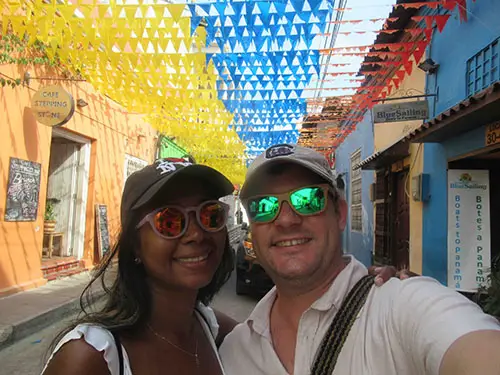
Like it? Pin it ?
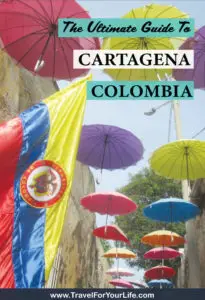

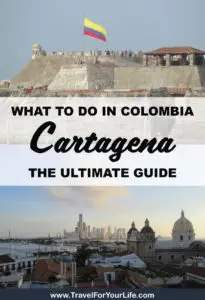
Related Posts
Where To Go in Colombia
Colombia is finally getting long-overdue recognition as one of the world’s top tourist destinations. With its cultural heritage, diverse natural beauty, and energetic cities, Colombia is becoming less renowned for Narcos and drugs and more acclaimed as a fun-filled...



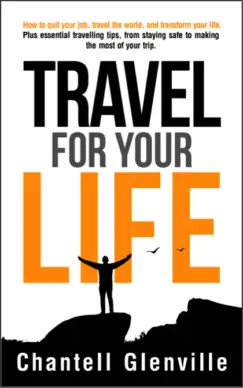

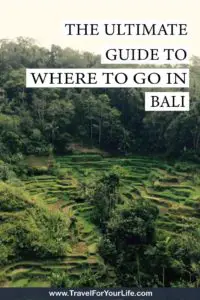


0 Comments